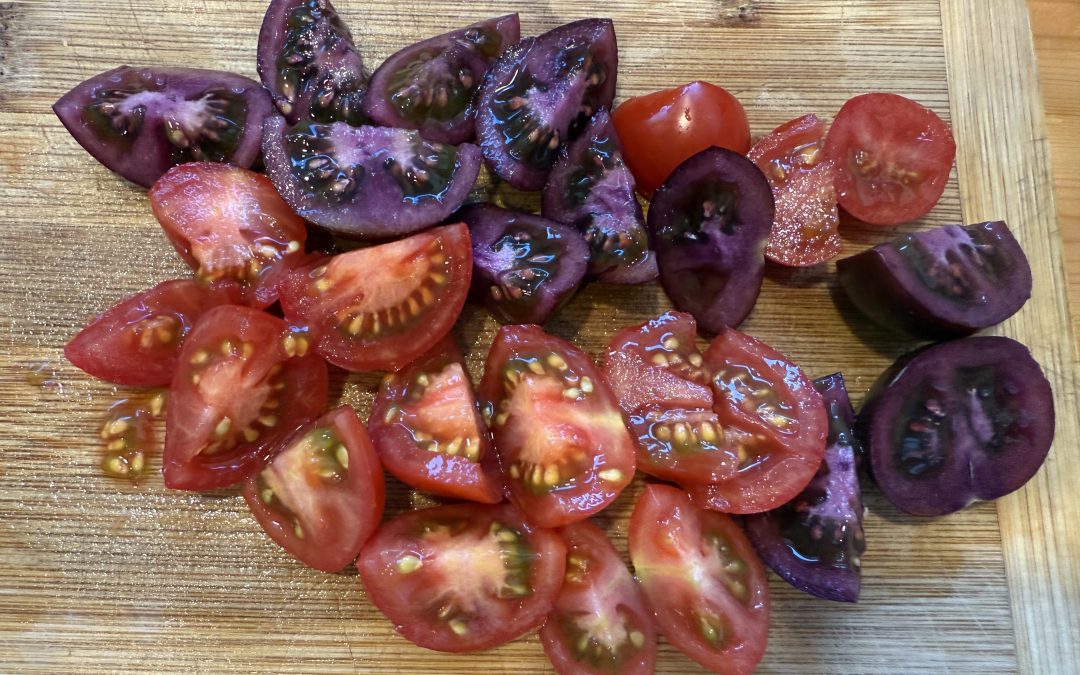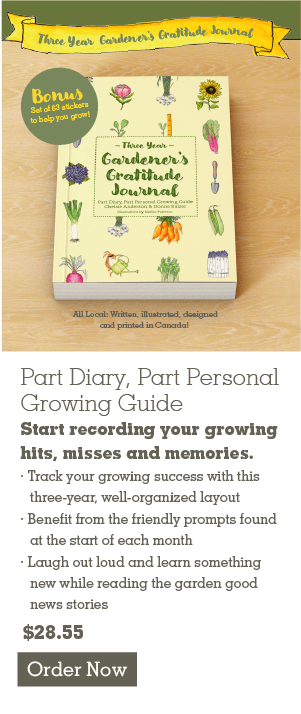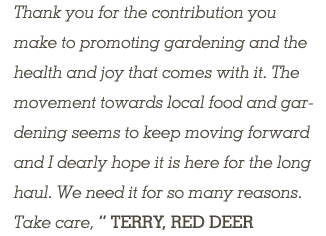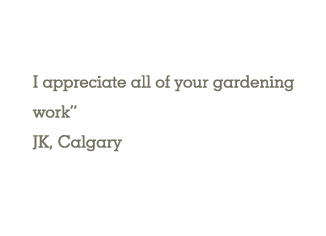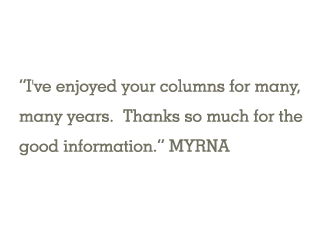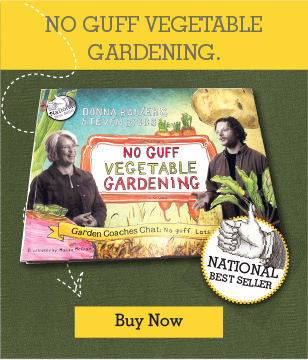LEARNING TO GROW – AFTER ALL THESE YEARS
I have failed small and won big this summer. I have learned things in my zone 3/4 garden, decided to retire and and then started a new job. It was BOTH a rainy and a sunny summer and the tales from the garden are only starting to emerge as September comes into it’s own. Ultimately, it should come as no surprise but I am still learning new things about a growing a vegetable garden after almost 50 years of earnest and dedicated fun.
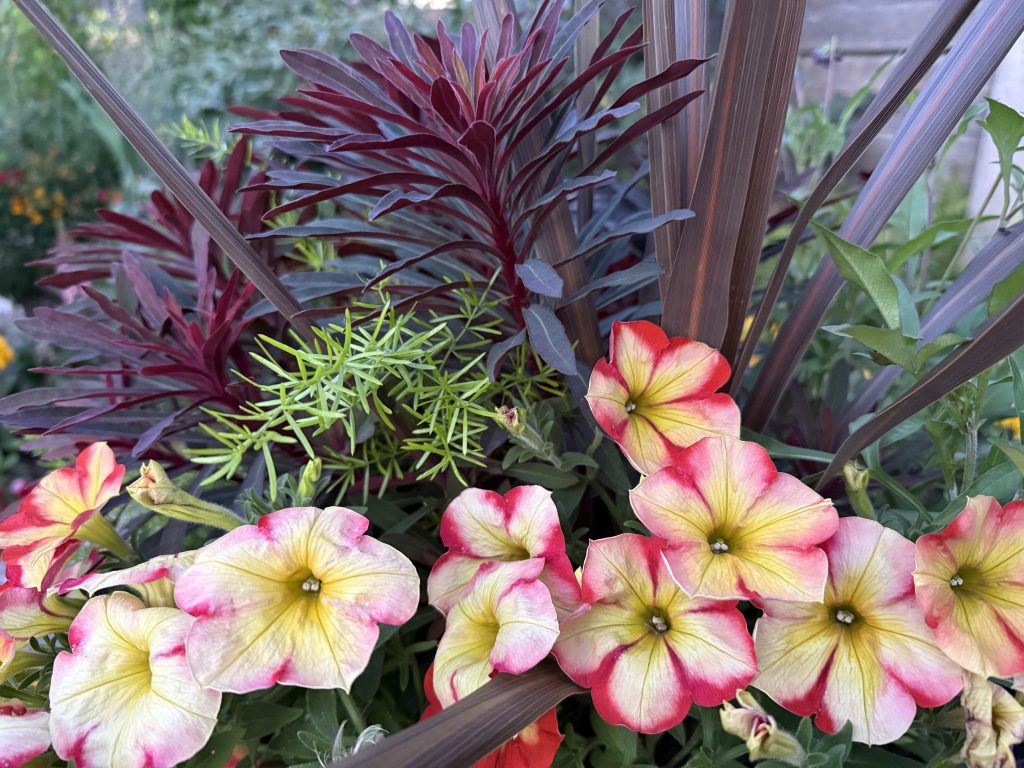
An amazing combination of Euphorbia (Purple), petunia (bicolour), and asparagus fern (green) was a show-off in my pots on my newly built 2025 patio from day 1.
Failures:
No one wants to fail, so when I started a new and exciting crop and condiment, black sesame, I had high hopes. I’ve grown amazing golden sesame before but noticed it doesn’t like being transplanted. So this year I started my Black Sesame seed directly in its forever pot outdoors in early May so it wouldn’t need transplanting. The sesame seeds germinated so quickly I was bubbling with anticipation. Over the summer I saw the plants repeatedly wilt and so I started watering it often even though Sesame is described as a plant that can dry out between watering. The plants were over three feet tall and in bloom and wilting again when I realized I had been nurturing a weed, not a tasty condiment, all summer!
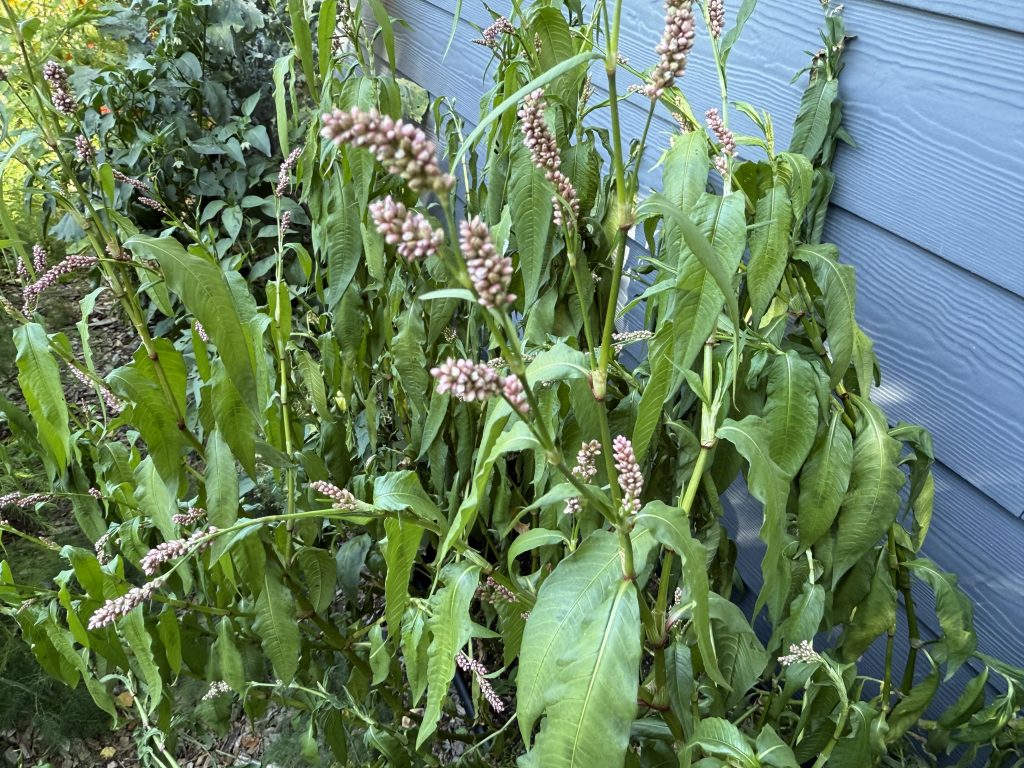
Red shank (Persicaria maculosum) is a type of persicaria considered a weed in Canada – it came up when I seeded black sesame in a pot- even though I have never seen it before in any of my gardens before. It kept wilting and I kept watering it and then I took a closer look at the flowers and used my phone’s Ai to identify it and realized it is a noxious weed, not a tasty condiment.
Yikes, if even an experienced gardener is nurturing weeds I am suddenly more compassionate towards all gardeners. I pulled out the noxious Persicaria last week after I realized I was watering a weed and there is no sign of the sesame I had seeded or its distinctive pink blooms and drought tolerant leaves. Where did this weed come from? The only thing planted in this pot with new soil was sesame and the seed was from a well-known and usually reliable seed company. I have never seen this weed in any of my gardens before so it couldn’t have drifted over from a near bye weed. Garden mysteries abound.
P.S. A plant that definitely looks like a weed is Quinoa and as of this writing it is in bloom and will hopefully produce seed this fall. Looking a lot like the weed Lamb’s Quarters, the harvest of this very tall annual seed is anxiously anticipated.
Lessons learned: Growing a new and unknown crop, especially in outdoor pots, takes special care. Seeds can blow in from anywhere or be brought in via bird droppings and suddenly a desired crop is replaced by a wretched weed!
Big Wins:
Before I threw away all my old and very old saved tomato seeds I decided to try everything again when I planted my entire collection of saved tomato seeds this spring. Result? I am newly in love with Cherokee purple, Indian Stripe, Ardwyna and Audrey’s love heirloom tomatoes. I also loved the early May crop of cherry tomatoes from my micro-dwarf Bonsai and Moment tomatoes. And, after purchasing anew, I am still not so crazy about my very expensive and comparable in size Big Beef or the tough skinned Sunrise Bumblebee cherry tomatoes. Heirloom seeds can be saved for years, but newer hybrids need to be purchased new every year.
By the way, my much reduced list of saved seeds includes Ardwyna, Cherokee Purple, Indian stripe, Audrey’s Love and a couple of the micro-dwarf cultivars such as Bonsai and Moment. I save the seed simply by spreading the gooey seed mass from each fruit on paper towel and store them in my cool room. I can’t save the hybrids like Big Beef and Purple Tomato so if I really really want them next year I will have to order them again.
Another big win this year is Maverick Zucchini because it is a hedge against climate change. Although gardeners used to joke about leaving their car doors locked so neighbours wouldn’t dump unwanted zucchini in the them this is just a gentle nod to the early nineties when there were plenty of pollinators and no real reason to lock your car. Today, I’ve notice you have to be lucky to get the pollinators at the right time to ensure you get pollination on your zucchini otherwise it could be late August (as happened with friends in Vancouver and Montana) and still not a single harvest. The discovery of Maverick, a zucchini plant that doesn’t need pollination means I have been eating and giving away zucchini since June 14 from my zone 3/4 garden in Calgary, Alberta. Acording to my 3-Year gardener’s gratitude journal, this is the earliest I have ever harvested zucchini. Sorry to bury the lead here but this is probably the best new plant I have grown in many years.
Lesson learned: Try old plants in new years. If they were worth saving from seed before they may still be worth growing. Also, growing saved seed lets you “refresh” your personal seed bank.
New Delights:
At first read, Purple Tomato doesn’t get me too excited. I already grow or have grown Cherokee Purple, Chocolate sprinkles, Karma purple, Purple Bumblebee and the one that took all the prizes at the Coombs fall fair one year: Black Cherry tomato. But Purple tomato (a cherry) came to me via a friend, Patty, and guess what? They are a visual delight. Unlike other so-called “black” and earlier varieties of dark skinned tomatoes this one is so blue inside it looks fictional. Does it taste any better? Not really. But it sure looks pretty, especially when cut on a plate!
Lesson Learned: New plants are developed every year and sometimes it is worth the gamble to grow something new.
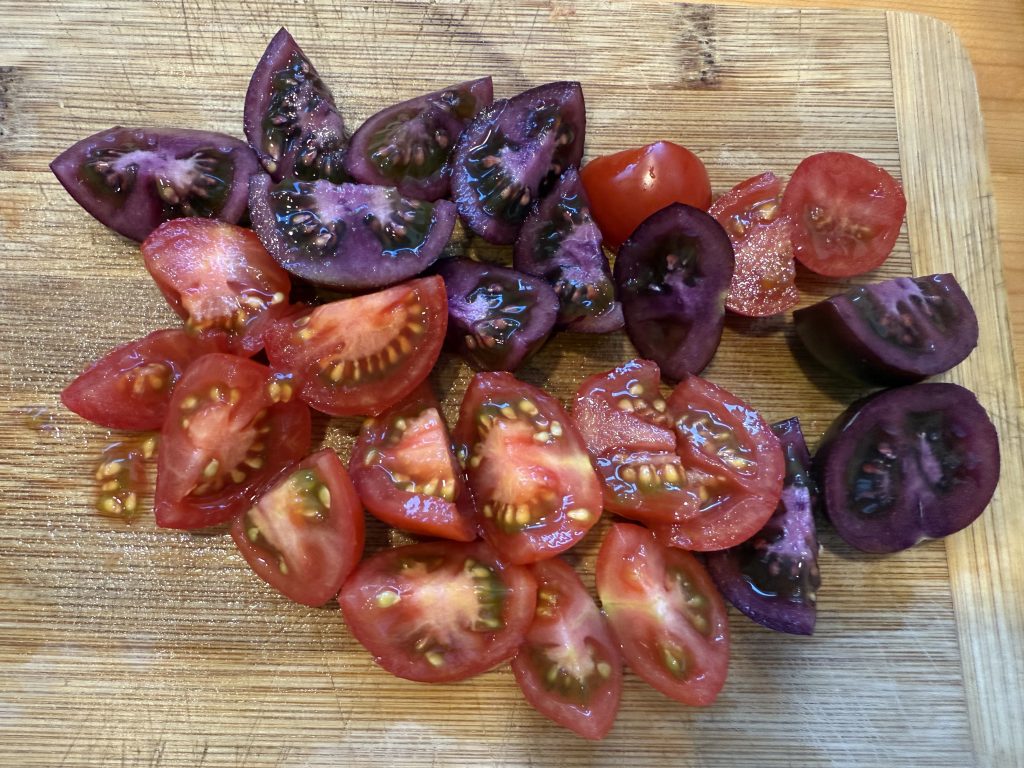
The brand new Purple Tomato (TM) has a super unique appearance but not a sufficiently better flavour or texture to keep buying it and growing it in the future.
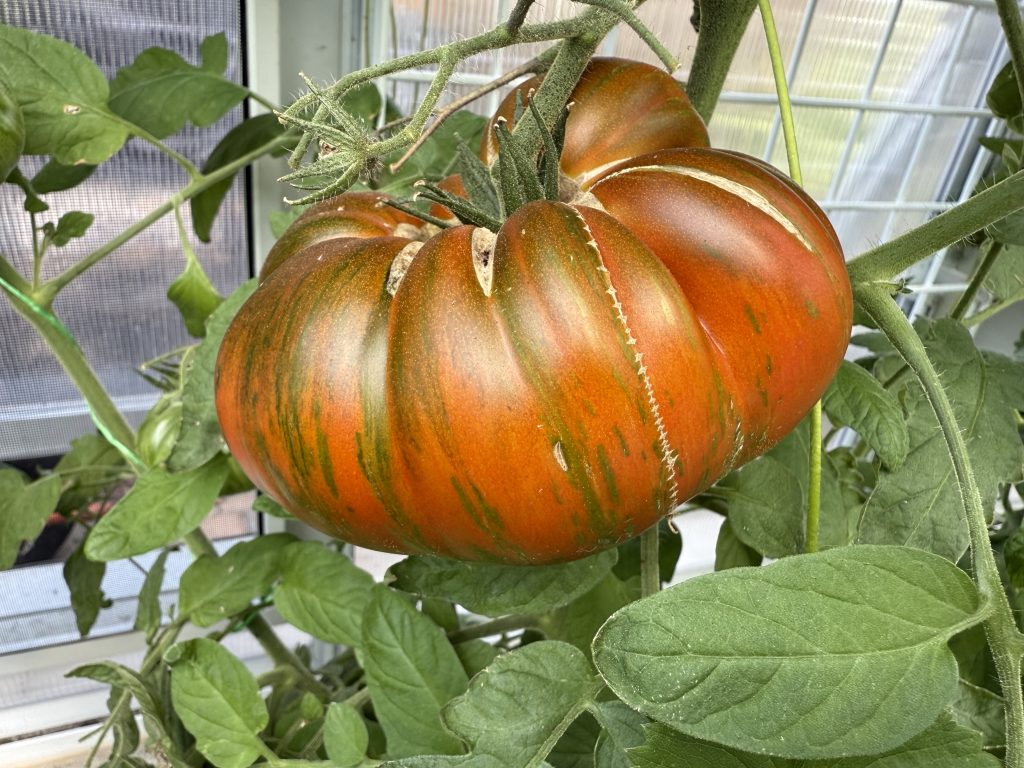
Indian Stripe Heirloom tomato is a definite yes going forward in my greenhouse because I can save the seeds for free and with a little attention to using fertilizer with chelated micronutrients, I can make sure I do not get cracking on the fruit as shown in this photo from earlier this summer.
Sorting Out Nutrient Trouble:
Early in the season I had some severe cracking on my large heirloom tomatoes. Both Cherokee Purple and Indian Striped tomatoes were suffering from cracks and one of my clients tossed all of hers in August because this excessive cracking can cause rotting in storage. I have been regularly using a fertilizer with micronutrients and by accident as well as through ongoing investigation I discovered cracking on tomatoes can be due to a lack of Copper. After the first few cracked tomatoes, I became the person who follows the directions on the fertilizer package and started weekly fertilizing with a low nitrogen but higher Phosphorus and Potassium fertilizer that also contains copper and other chelated micronutrients. In the future I will avoid all-summer use of the typical 20-20-20 fertilizers that contain only the big three nutrients (Nitrogen, Phosphorus and Potassium) and start in with a fruit and flower blend containing chelated micronutrients like copper earlier in July or August.
Big surprise! With regular fertilizer use where chealted micronutrients are part of the blend, all my big tomatoes are perfect and crack free now so copper-containing fertilizer is on my list again for next summer. TIP: Kelp used with fertilizer can also boost results.
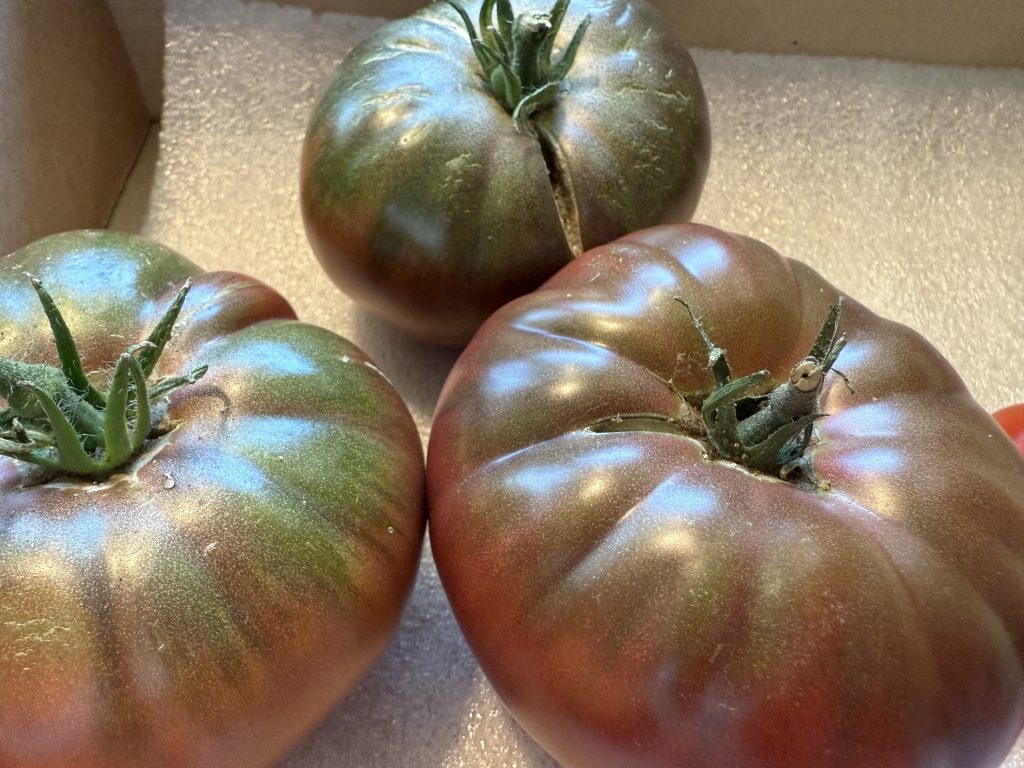
Cherokee Purple tomato is an amazing addition to a BLT! Also, as the season progressed, I had fewer cracks on the fruit as I started fertilizing with a fertilizer containing chelated Copper in its formula.
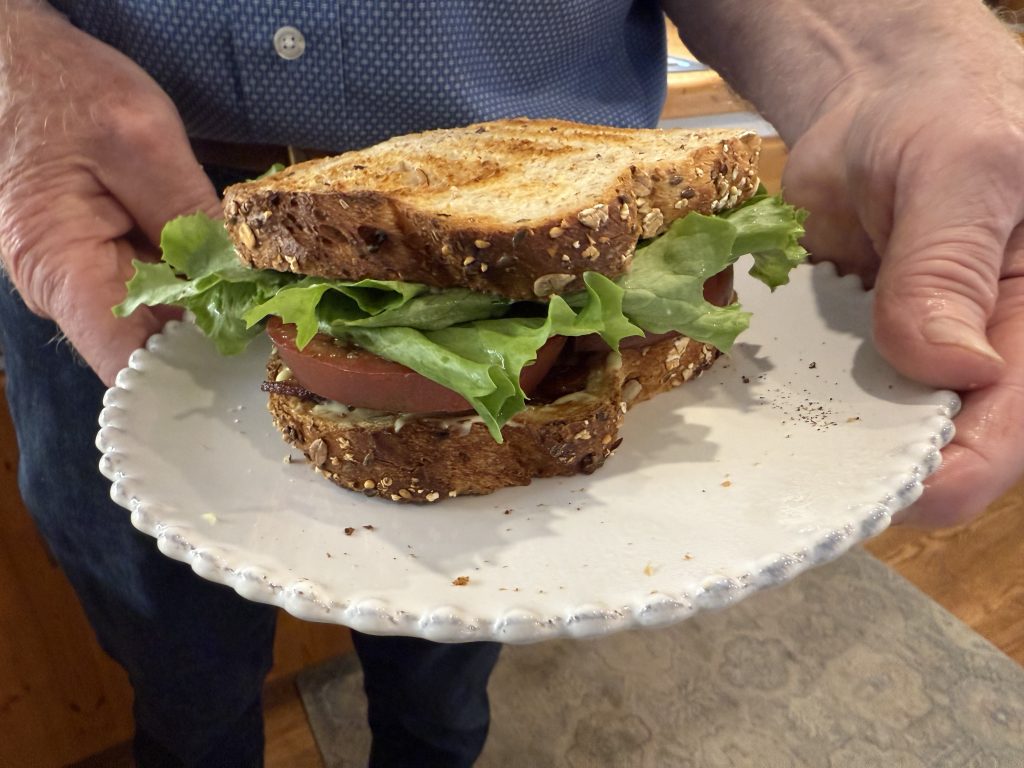
A fantastic BLT made on August 8 with one of my Cherokee Purple tomatoes, an heirloom seed I save. This is an indeterminate tomato so it is still growing taller and making new fruit in my greenhouse in Calgary, Alberta in early September.
Quitting and Restarting:
I gave my bookkeeper the heads up this spring that I am retirement ready. This means I no longer need to run online classes* or visit gardeners in their space to help with designs. It also means more time in my own garden “Just for Fun.”
*The exception to this no teaching rule is my lemon class running this year September 22 and 25, 2025. This class is just so much fun and it is so rewarding to give friends and neighbours lemons from my “northern” plants that I love sharing so everyone can do this.
The new job, if you are interested, is Greenhouse Manager for the Rangeview HOA in Calgary. Drop by the fantastic new greenhouse in the new neighbourhood of Rangeview in Calgary on September 11 from noon- 4 to meet me and package your own seeds from my garden for your 2026 garden.
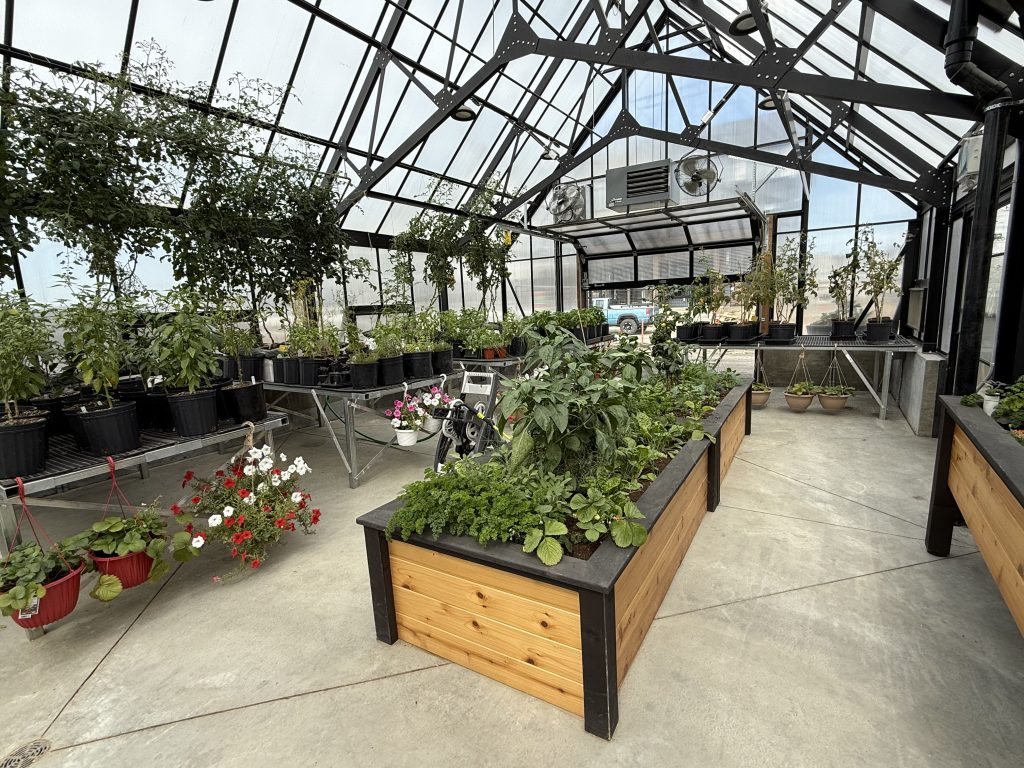
My new “job” is at the Rangeview HOA Greenhouse supplying expertise and help to homeowners and garden staff. I have been a consultant there in 2025 but that job has expanded as residents anticipate growing more food in their community.
Last Chance Lemon Class
Yes- Steven Biggs and I have taught this before but it just keeps getting better and better. Jump in if you can because this might be our last live class together (Read about my pending retirement above) and also it is simply a fun way to spend time virtually with like-minded gardeners.
PS If you are in the Calgary area I will give the first ten people to sign for the class a small rooted cutting of a Meyer lemon I have grown from my impressive potted tree! But as soon as you sign up let me know so I can reserve a lemon plant for you to pick up. Win-Win! SIGN UP HERE NOW
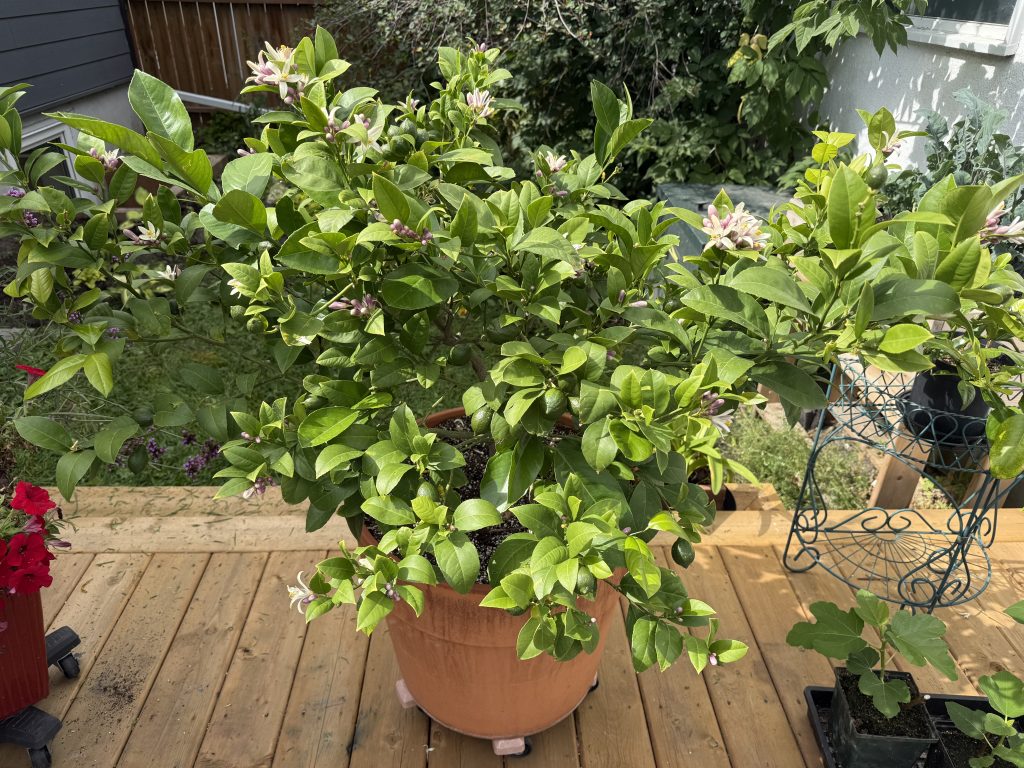
My little lemon is in a pot on my patio for the summer but spends winters in my cool poorly lighted garage. Would you like to grow lemons in a cool climate? Take my class this September.
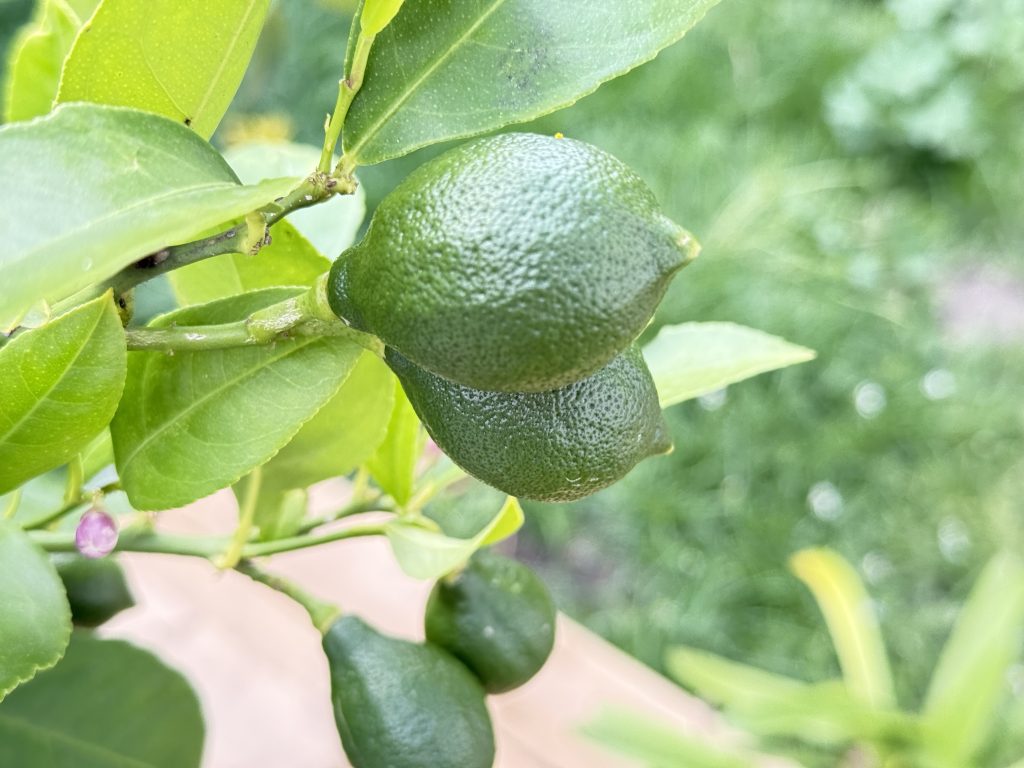
With well over 100 lemons and more to come on my five year-old potted lemon tree means I am in for a winter of good eating! Luckily lemons do not need to be picked all and once and can be enjoyed as needed in the kitchen over the winter and into next spring.
